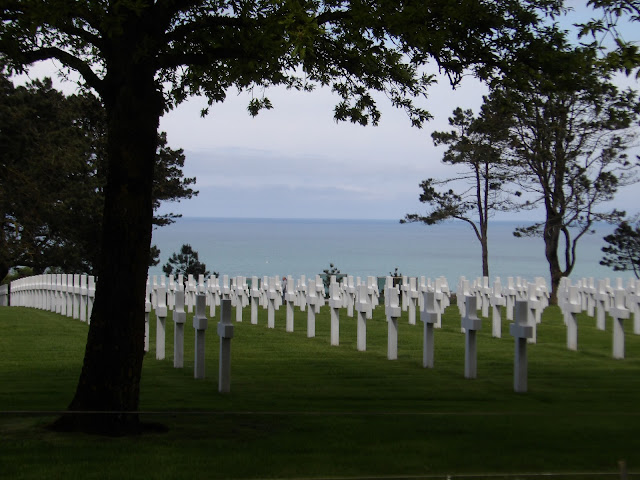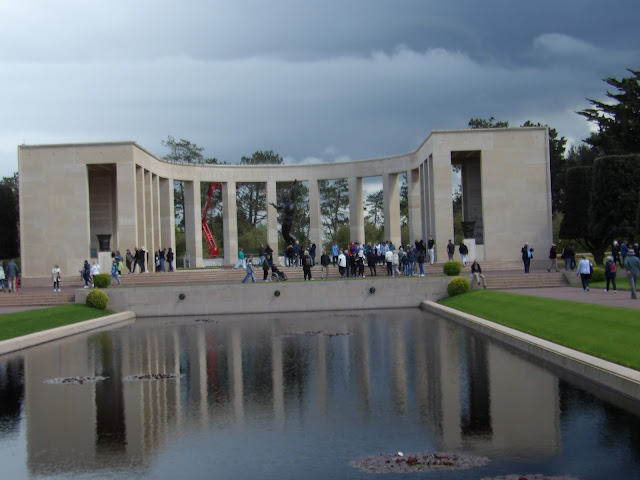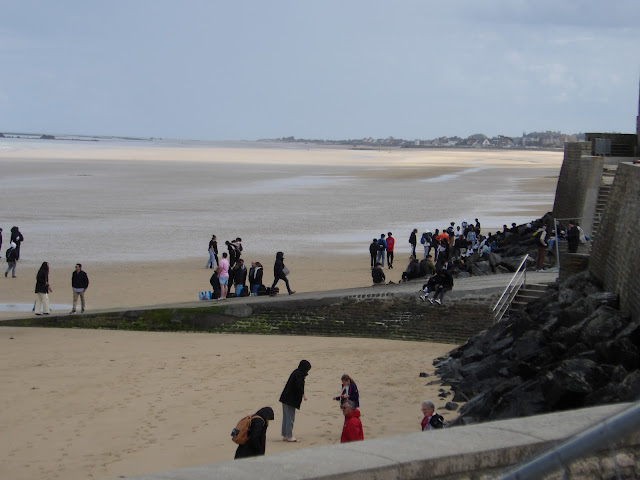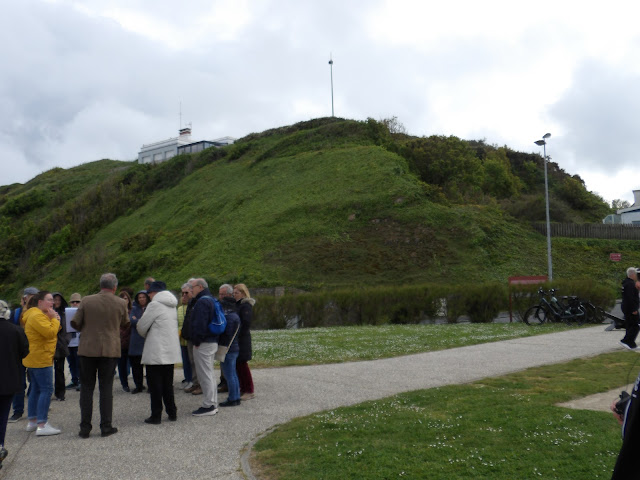ALERT: This blog post is exceptionally long. Our Normandy stop, along with Delhi, India (Easter Sunday sunrise at Taj Mahal!), were the highlights of our four-month cruise.
Normandy was very emotional, both for Diane and myself. Our dads served in WW II and Diane's dad and I served in Viet Nam.
Our Normandy visit preceeded the 80th anniversity celebration of the June 6, 1944 landings.
The cemetery, which was dedicated in 1956, is the most visited cemetery of those maintained by the American Battle Monuments Commission (ABMC), with one million visitors a year. In 2007, the ABMC opened a visitor center at the cemetery, relating the global significance and meaning of Operation Overlord.
A memorial in the cemetery includes maps and details of the Normandy landings and military operations that followed. At the memorial's center is Spirit of American Youth Rising from the Waves, a bronze statue. The cemetery also includes two flag poles where, at different times, people gather to watch the American flags being lowered and folded.
The cemetery is located on a bluff overlooking Omaha Beach (one of the landing beaches of the Normandy Invasion) and the English Channel. It covers 172.5 acres, and contains the remains of 9,388 American military dead, most of whom were killed during the invasion of Normandy and ensuing military operations in World War II. Included are graves of Army Air Corps crews shot down over France as early as 1942 and four American women.
Only some of the soldiers who died overseas are buried in the overseas American military cemeteries. When it came time for a permanent burial, the next of kin eligible to make decisions were asked if they wanted their loved ones repatriated for permanent burial in the U.S., or interred at the closest overseas cemetery.
Aerial view of the Chapel
Ceiling mural


Theodore Roosevelt, JR - Medal of Honor
View of monuent from Chapel

On our way to Omaha Beach we visited a major museum in the village of Arramanches.
Museum models
Outdoors is a number of US weapons, temporary sea bridges, and remnants of sunken ocean current blockades
Barrier to calm the water for floating docks
Enroute to Omaha Beach we passed an outdoor museum
(blurred due to speed of bus)




On June 6, 1944, the 607th Quartermaster Graves Registration Company of the U.S. First Army established the temporary cemetery, the first American cemetery on French soil in World War II. After the war, the present-day cemetery was established a short distance to the east of the original site.
It was dedicated on July 19, 1956, in the presence of Admiral Thomas C. Kinkaid of the U.S. Navy, representing President Dwight D. Eisenhower, and French General Jean Ganeval, representing President René Coty.
Like all other overseas American cemeteries in France for World War I and II, the French Government has granted the United States a special concession to the land occupied by the cemetery, for an unlimited duration, free of any charge or any tax, as long as the United States maintains the cemetery. It does not benefit from extraterritoriality and remains the property of the French State This cemetery is managed by the American Battle Monuments Commission, a small independent agency of the U.S. federal government, under Congressional acts that provide yearly financial support for maintaining them, with most military and civil personnel employed abroad. The U.S. flag flies over these granted soils.
https://en.wikipedia.org/wiki/Normandy_American_Cemetery_and_Memorial

Hints of hills and bluffs above the beaches

Omaha memorial



Example of hedge rows that made ground combat extremely difficult and dangerous

Country side on bus ride back to port
Our second to last portcall was Dover, England, just across the channel




























































































Comments
Post a Comment